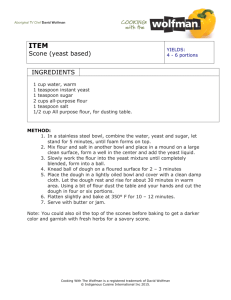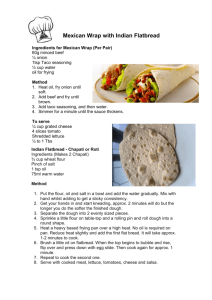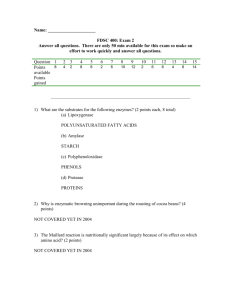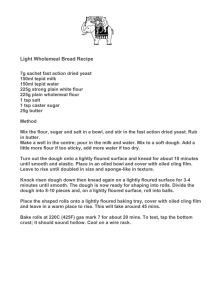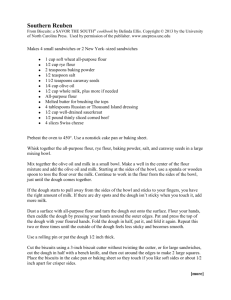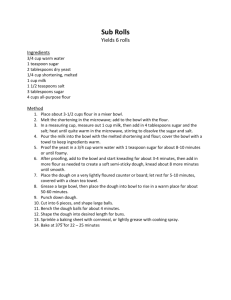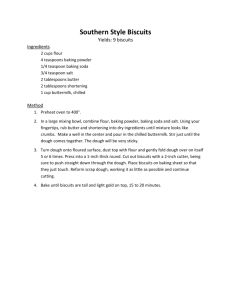HOMEMADE PASTA DOUGHS
advertisement
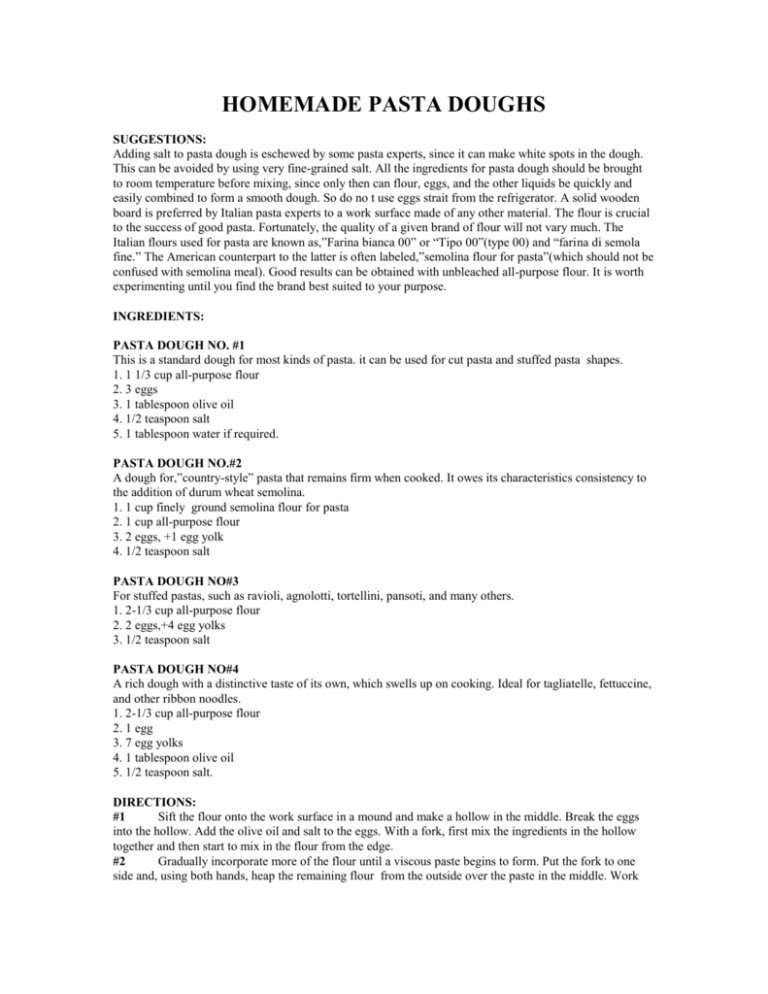
HOMEMADE PASTA DOUGHS SUGGESTIONS: Adding salt to pasta dough is eschewed by some pasta experts, since it can make white spots in the dough. This can be avoided by using very fine-grained salt. All the ingredients for pasta dough should be brought to room temperature before mixing, since only then can flour, eggs, and the other liquids be quickly and easily combined to form a smooth dough. So do no t use eggs strait from the refrigerator. A solid wooden board is preferred by Italian pasta experts to a work surface made of any other material. The flour is crucial to the success of good pasta. Fortunately, the quality of a given brand of flour will not vary much. The Italian flours used for pasta are known as,”Farina bianca 00” or “Tipo 00”(type 00) and “farina di semola fine.” The American counterpart to the latter is often labeled,”semolina flour for pasta”(which should not be confused with semolina meal). Good results can be obtained with unbleached all-purpose flour. It is worth experimenting until you find the brand best suited to your purpose. INGREDIENTS: PASTA DOUGH NO. #1 This is a standard dough for most kinds of pasta. it can be used for cut pasta and stuffed pasta shapes. 1. 1 1/3 cup all-purpose flour 2. 3 eggs 3. 1 tablespoon olive oil 4. 1/2 teaspoon salt 5. 1 tablespoon water if required. PASTA DOUGH NO.#2 A dough for,”country-style” pasta that remains firm when cooked. It owes its characteristics consistency to the addition of durum wheat semolina. 1. 1 cup finely ground semolina flour for pasta 2. 1 cup all-purpose flour 3. 2 eggs, +1 egg yolk 4. 1/2 teaspoon salt PASTA DOUGH NO#3 For stuffed pastas, such as ravioli, agnolotti, tortellini, pansoti, and many others. 1. 2-1/3 cup all-purpose flour 2. 2 eggs,+4 egg yolks 3. 1/2 teaspoon salt PASTA DOUGH NO#4 A rich dough with a distinctive taste of its own, which swells up on cooking. Ideal for tagliatelle, fettuccine, and other ribbon noodles. 1. 2-1/3 cup all-purpose flour 2. 1 egg 3. 7 egg yolks 4. 1 tablespoon olive oil 5. 1/2 teaspoon salt. DIRECTIONS: #1 Sift the flour onto the work surface in a mound and make a hollow in the middle. Break the eggs into the hollow. Add the olive oil and salt to the eggs. With a fork, first mix the ingredients in the hollow together and then start to mix in the flour from the edge. #2 Gradually incorporate more of the flour until a viscous paste begins to form. Put the fork to one side and, using both hands, heap the remaining flour from the outside over the paste in the middle. Work the flour into the paste. If the paste does not absorb all the flour, and if the ingredients cannot be easily worked, add a little water. #3 Work in the water with both thumbs, then press the dough into a ball and work in the rest of the flour. Not the actual kneading begins. Push out the dough with the heels of the hands, then form it into a ball again. Repeat this kneading action until the dough has a firm but slightly elastic consistency and no longer changes shape when you remove your hands. Cover with plastic wrap and let rest about 1 hours. Next select the type of pasta you need and use the desired cutter to cut the pasta and hang it to dry at least 1 hour before cooking. Cook the pasta in boiling salt water with a little olive oil in the water to prevent sticking. Remember, homemade pasta doesn’t require the long cooking of store bought pasta. When cooked to your desire, put under cold water and rinse and reserve for your use in your favorite dish. Reheat when ready to serve. EASY FOOD PROCESSOR PASTA Makes 1-1/4 pounds of pasta dough In a food processor add: INGREDIENTS: 1. 2-1/2 cups all-purpose flo0ur 2. ½ cup cake flour 3. 1 Tsp. table salt Whisk together: 4. 5 eggs 5. 1 Tbs. olive oil Add liquid ingredients to flour mixture while processor is running. DIRECTIONS: Process both flours and salt together in a food processor. Whisk eggs and oil together in a measuring cup with a pour spout. With machine running, add egg mixture to the flour until dough forms around the blade. Remove dough and knead by hand on a floured surface until smooth. Divided dough into quarters, wrap in plastic and let rest at least 15 minutes before kneading with the pasta maker. KNEADING & ROLLING In most doughs, hand-kneading works fine for developing gluten, but here you’ll use the pasta maker. It’s more efficient (and a lot easier) than kneading by hand. Set the rollers to their widest setting. Next, flour a portion of dough and crank it through the maker, then dust with more flour, brush off the excess, and fold. Continue this process until the dough is smooth, about 10 times, then wrap in plastic. Let rest while kneading the remaining dough.
